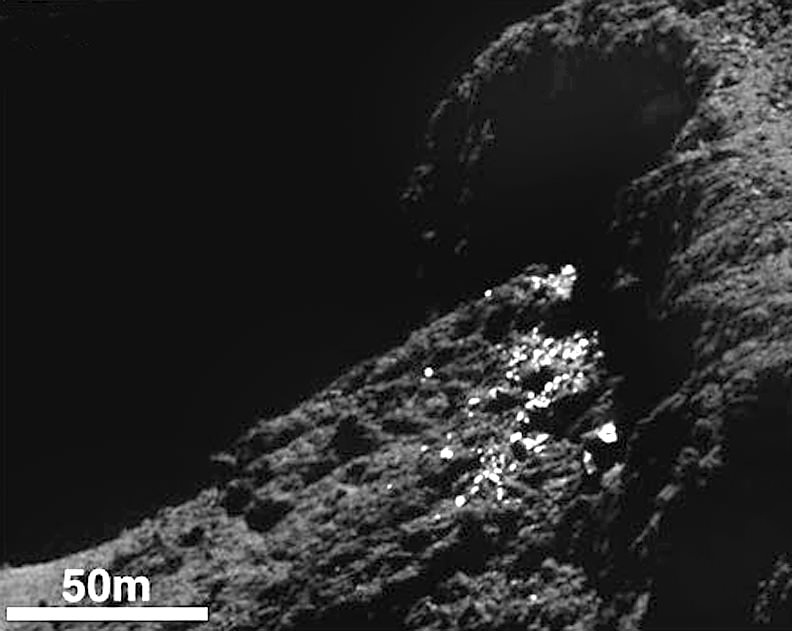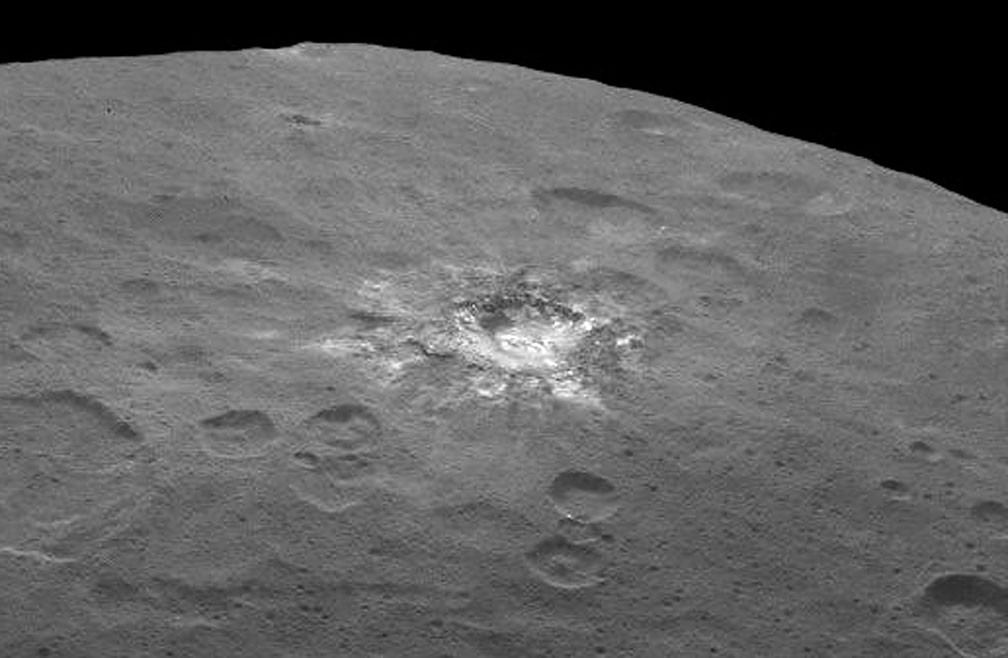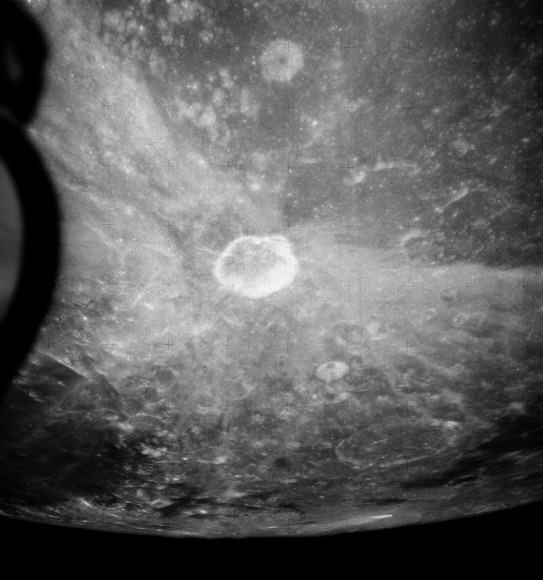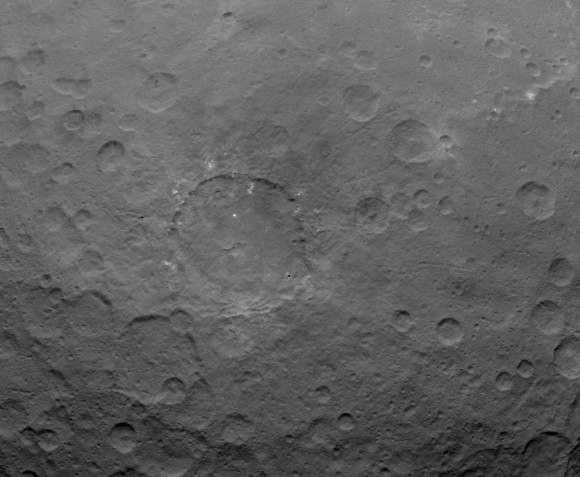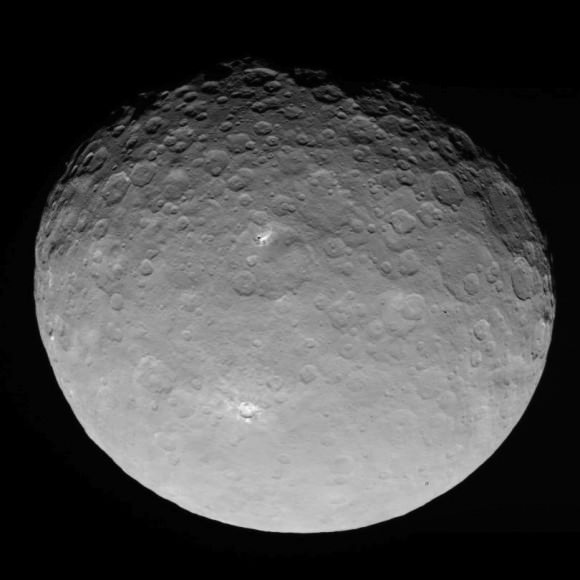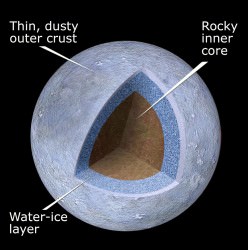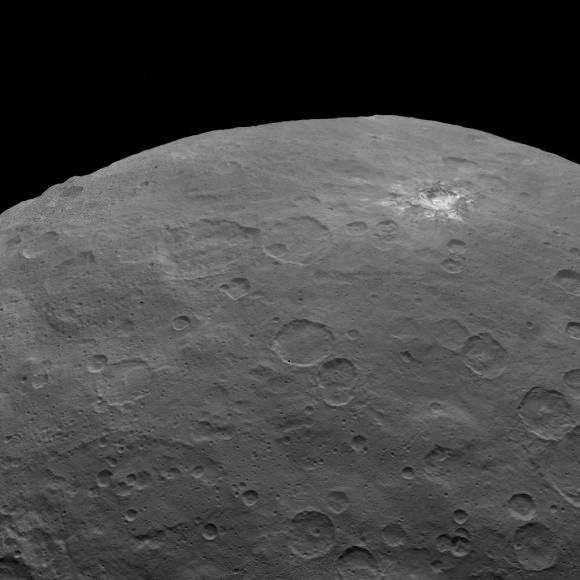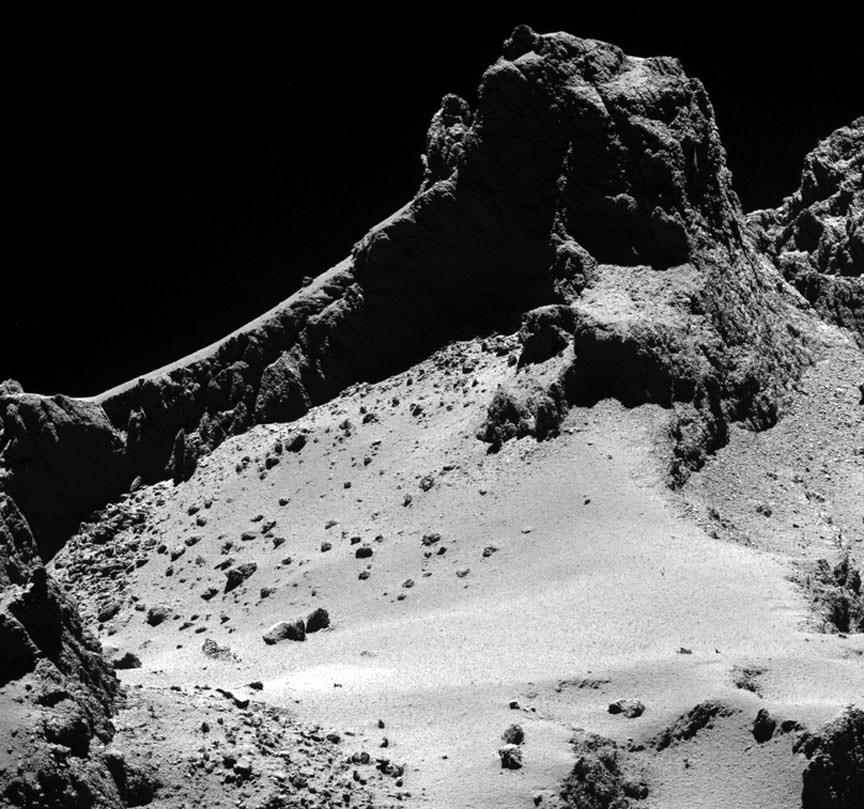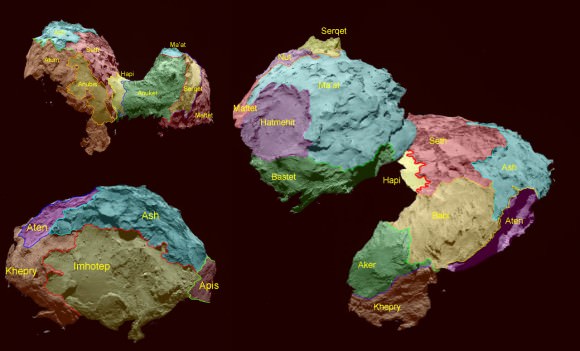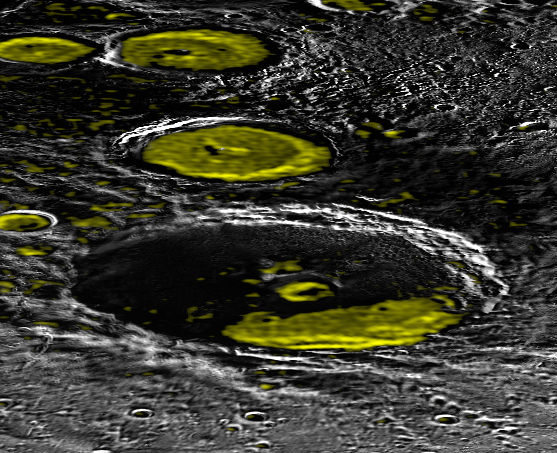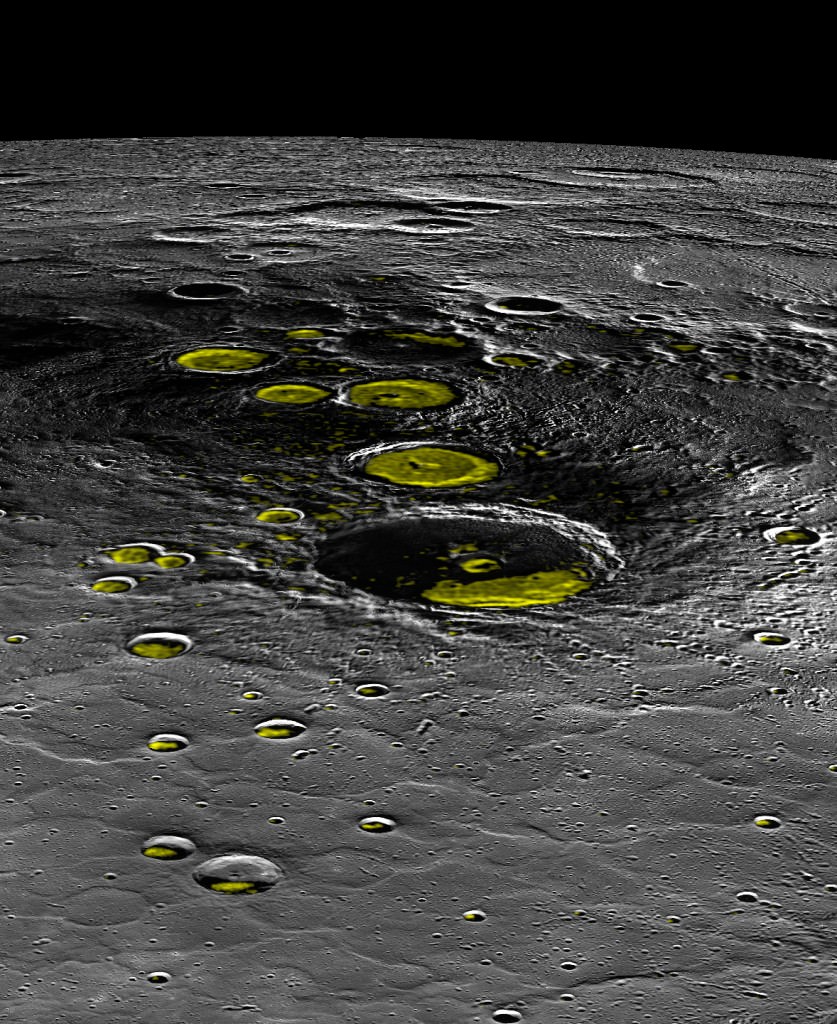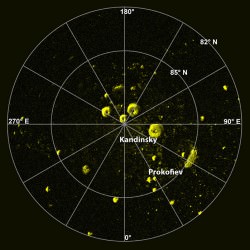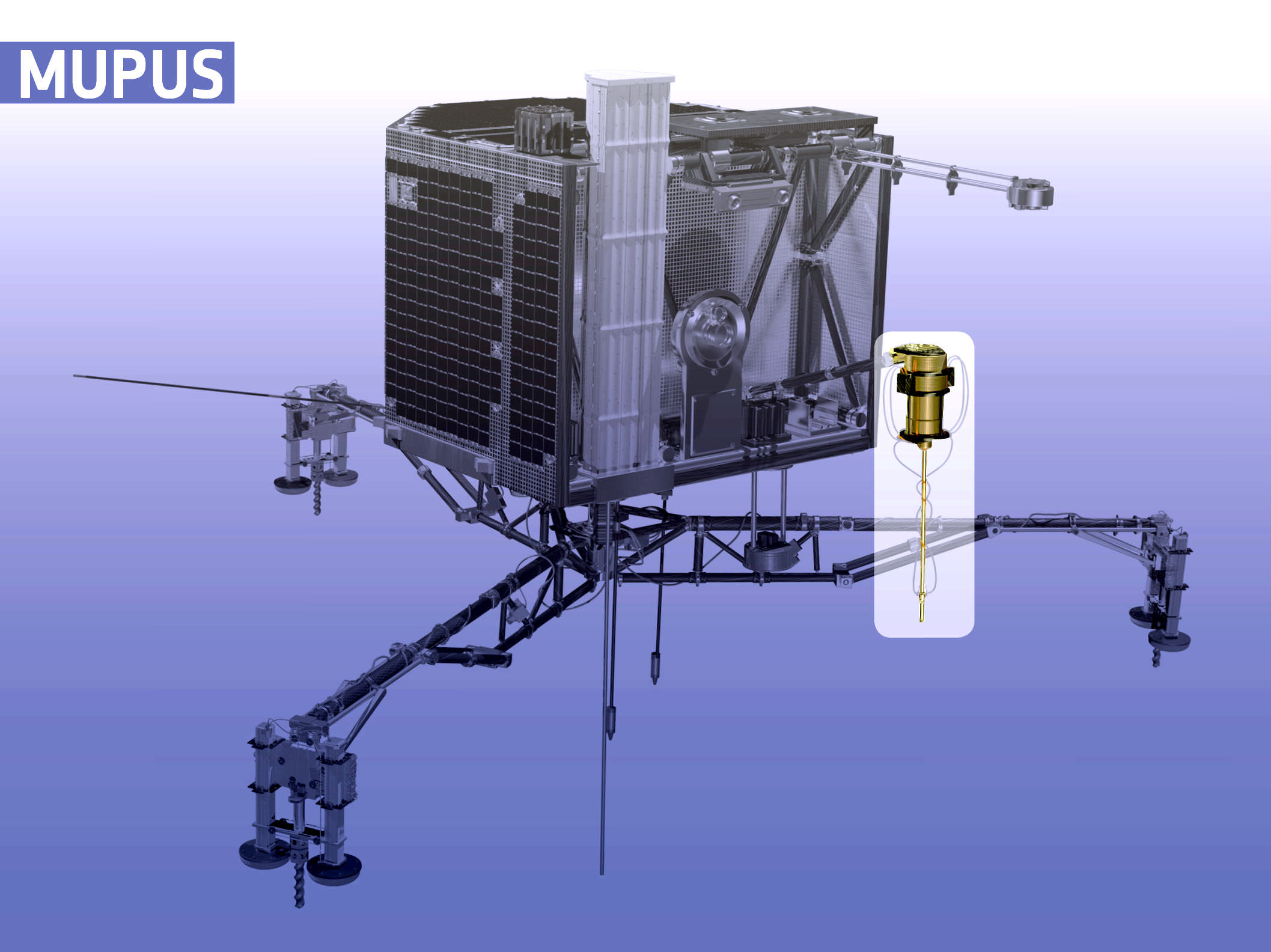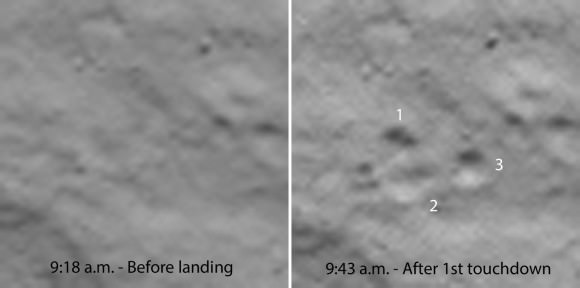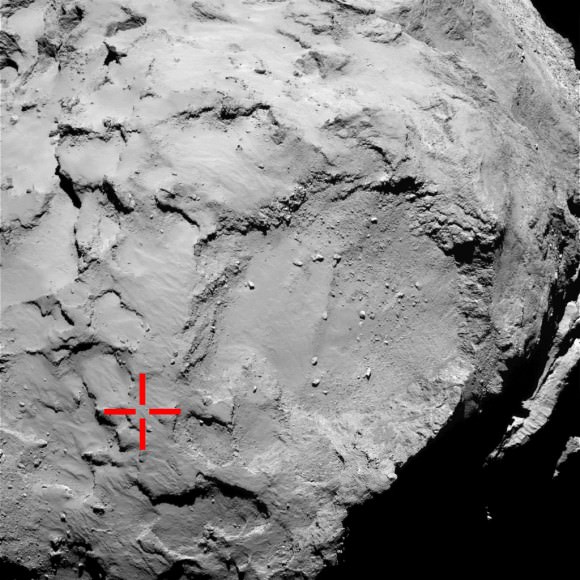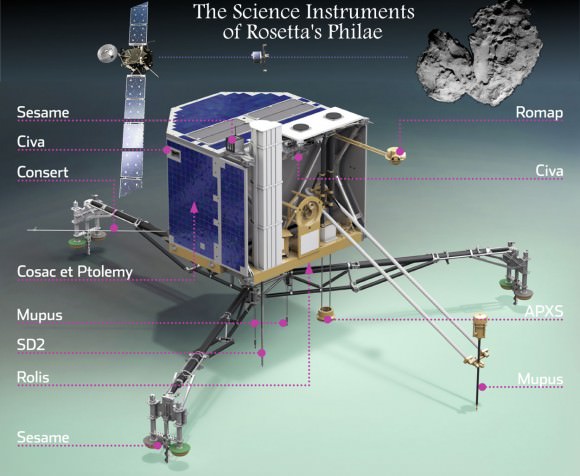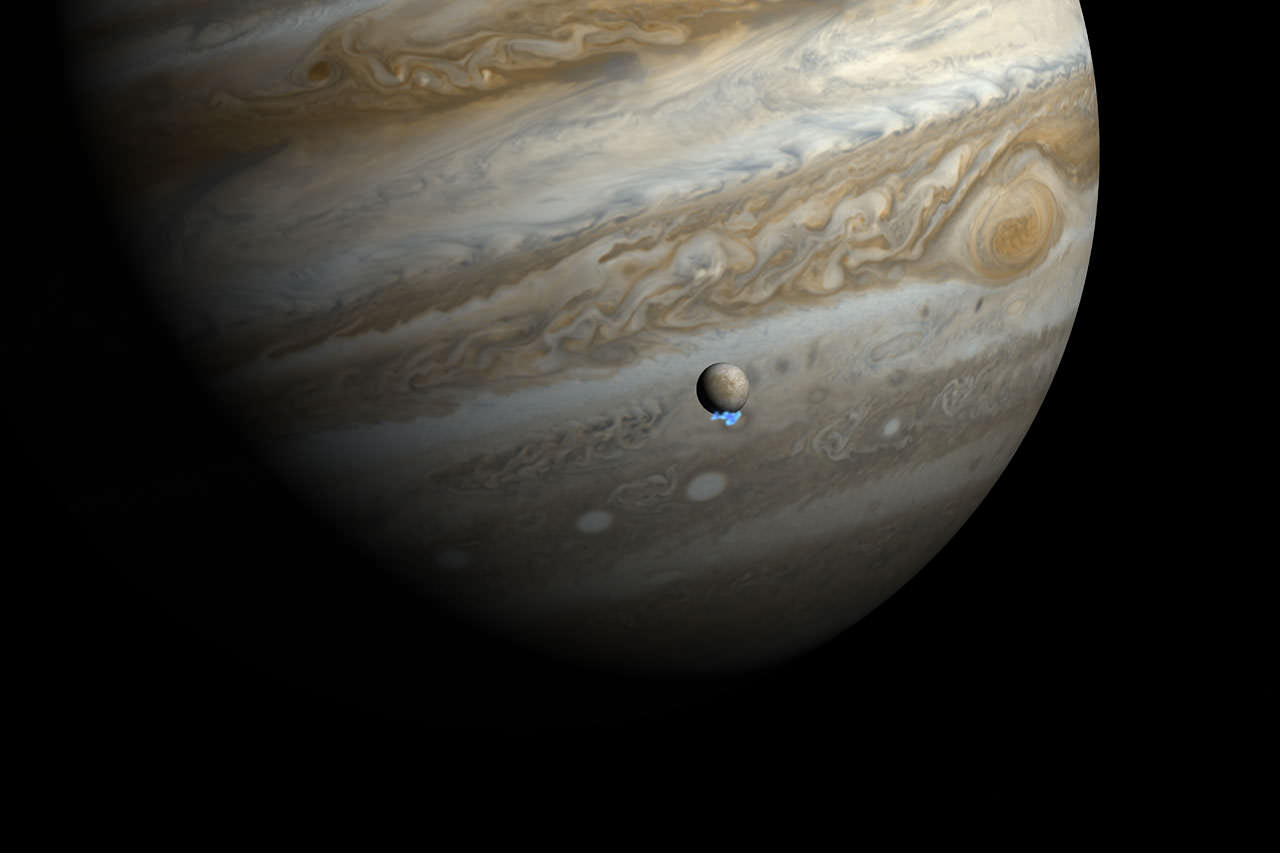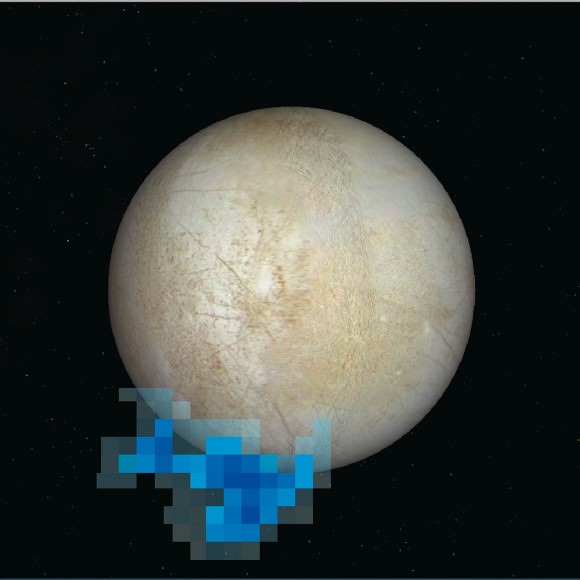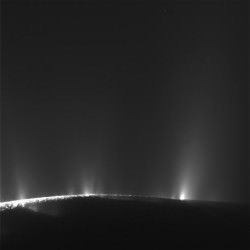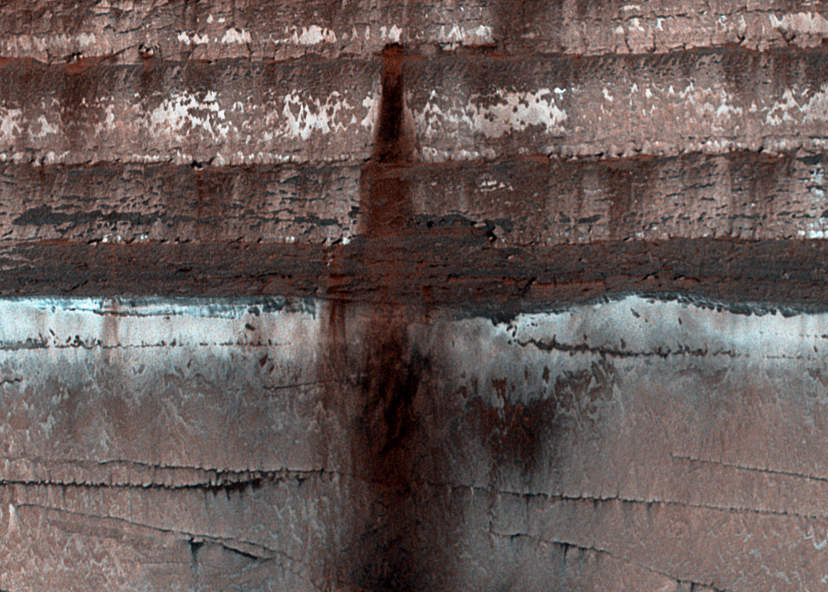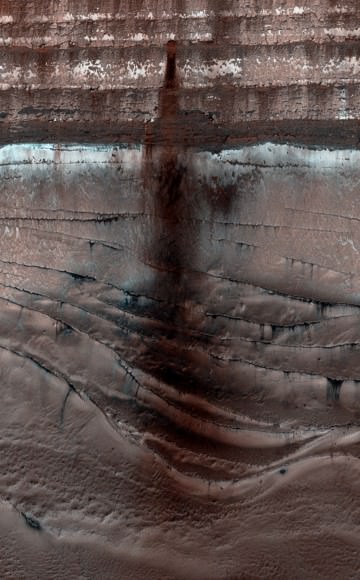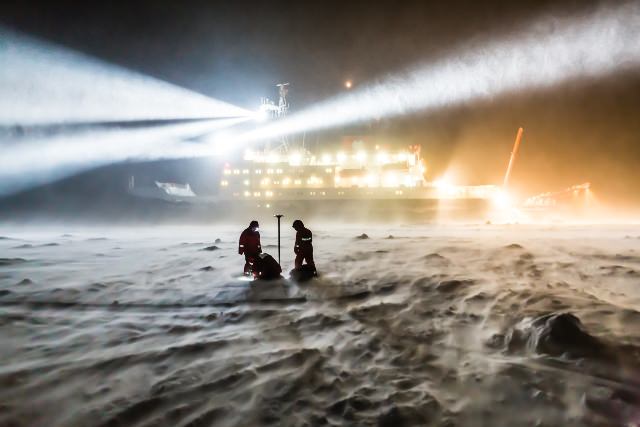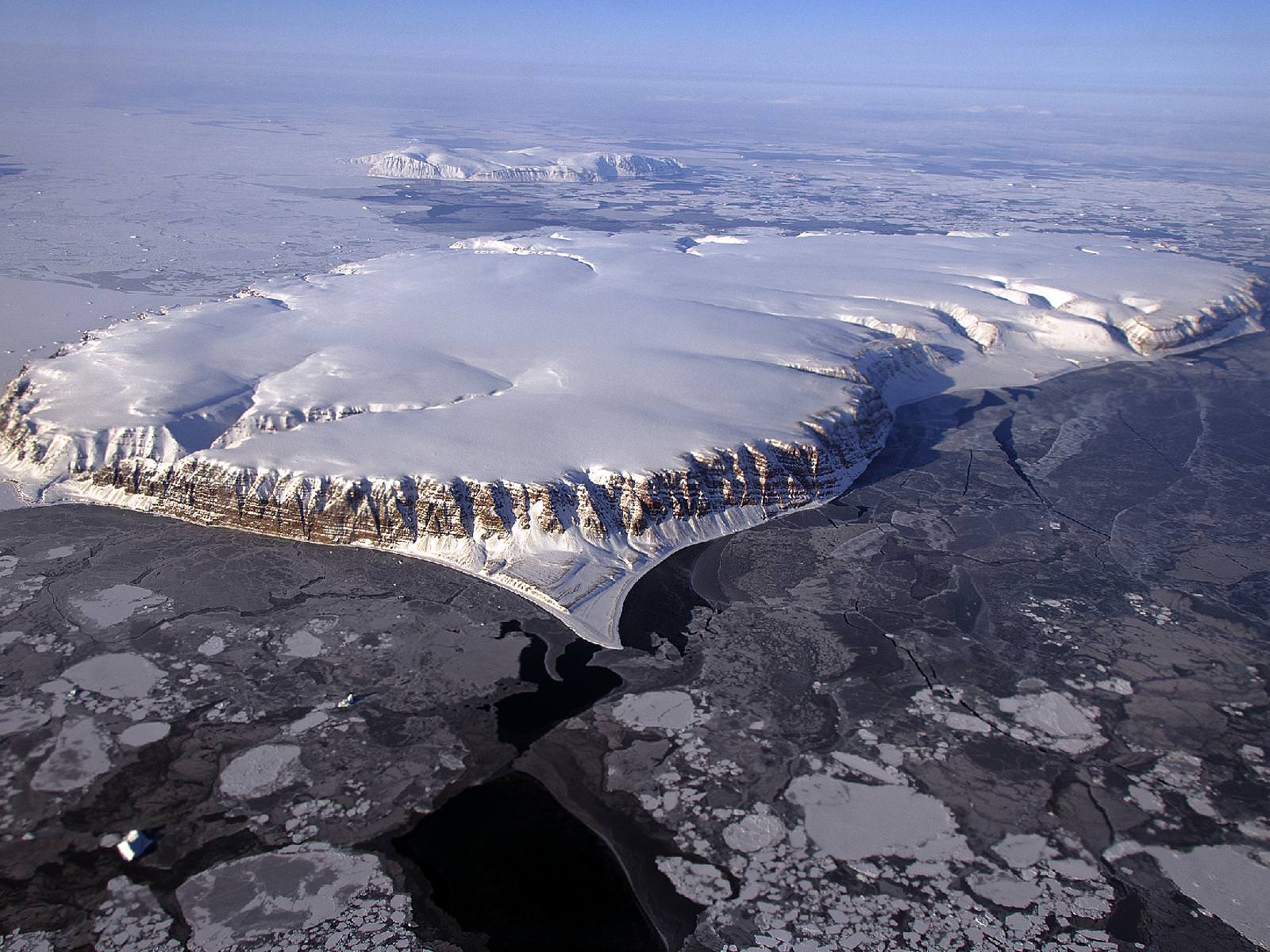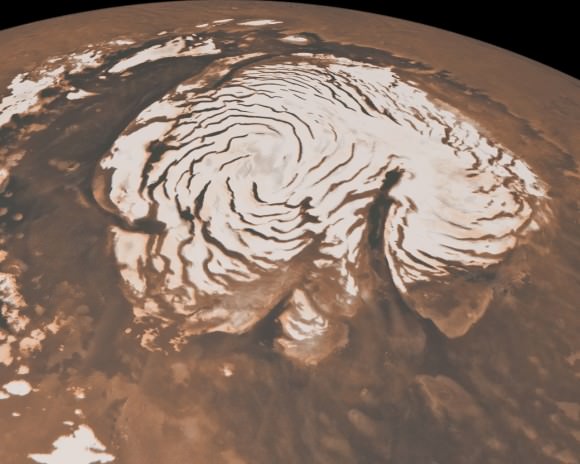Comet 67P/C-G may be tiny at just 2.5 miles (4 km) across, but its diverse landscapes and the processes that shape them astound. To say nature packs a lot into small packages is an understatement.
In newly-released images taken by Rosetta’s high-resolution OSIRIS science camera, the comet almost seems alive. Sunlight glints off icy boulders and pancaking sinkholes blast geysers of dust into the surrounding coma.
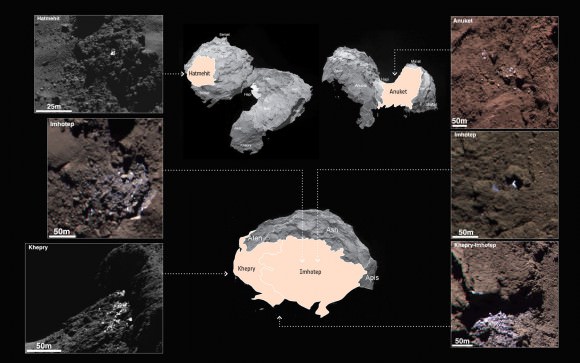
More than a hundred patches of water ice some 6 to 15 feet across (a few meters) dot the comet’s surface according to a new study just published in the journal Astronomy & Astrophysics. We’ve known from previous studies and measurements that comets are rich in ice. As they’re warmed by the Sun, ice vaporizes and carries away embedded dust particles that form the comet’s atmosphere or coma and give it a fuzzy appearance.
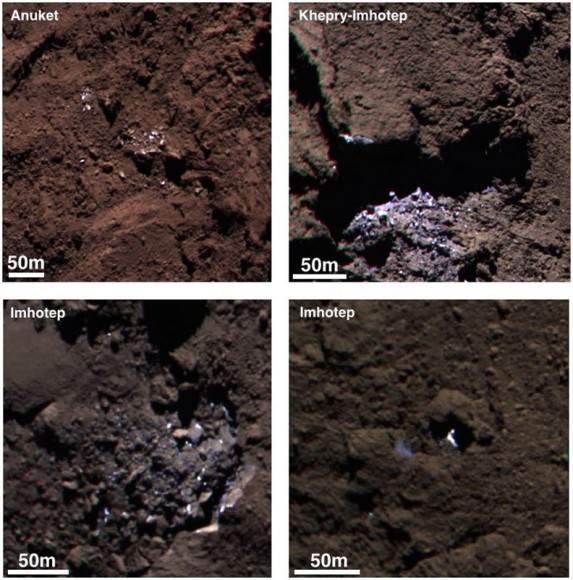
Not all that fine powder leaves the comet. Some settles back to the surface, covering the ice and blackening the nucleus. This explains why all the comets we’ve seen up close are blacker than coal despite being made of material that’s as bright as snow.
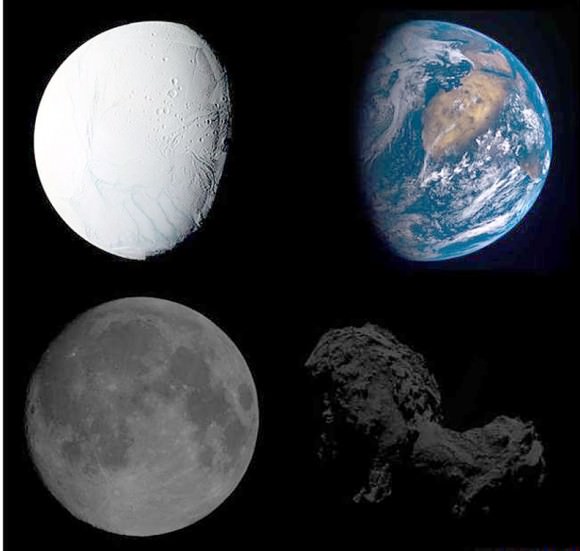
Scientists have identified 120 regions on the surface of Comet 67P/Churyumov-Gerasimenko that are up to ten times brighter than the average surface brightness. Some are individual boulders, while others form clusters of bright specks. Seen in high resolution, many appear to be boulders with exposures of ice on their surfaces; the clusters are often found at the base of overhanging cliffs and likely got there when cliff walls collapsed, sending an avalanche of icy rocks downhill and exposing fresh ice not covered by dark dust.
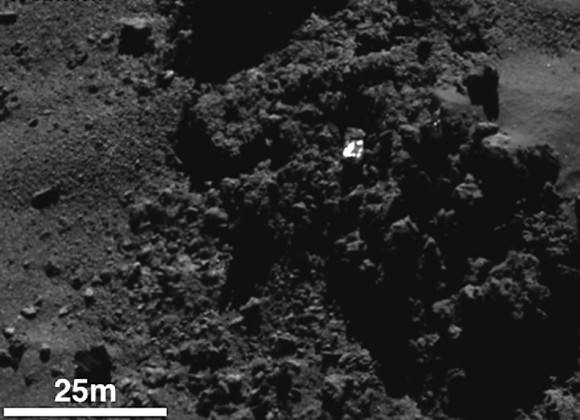
More intriguing are the isolated boulders found here and there that appear to have no relation to the surrounding terrain. Scientists think they arrived George Jetson style when they were jetted from the comet’s surface by the explosive vaporization of ice only to later land in a new location. The comet’s exceedingly low gravity makes this possible. Let that image marinate in your mind for a moment.
All the ice-glinting boulders seen thus far were found in shadowed regions not exposed to sunlight, and no changes were observed in their appearance over a month’s worth of observations.
“Water ice is the most plausible explanation for the occurrence and properties of these features,” says Antoine Pommerol of the University of Bern and lead author of the study.
How do we know it’s water ice and not CO2 or some other form of ice? Easy. When the observations were made, water ice would have been vaporizing at the rate of 1 mm per hour of solar illumination. By contrast, carbon monoxide or carbon dioxide ice, which have much lower freezing points, would have rapidly sublimated in sunlight. Water ice vaporizes much more slowly in comparison.
Lab tests using ice mixed with different minerals under simulated sunlight revealed that it only took a few hours of sublimation to produce a dust layer only a few millimeters thick. But it was enough to conceal any sign of ice. They also found that small chunks of dust would sometimes break away to expose fresh ice beneath.
“A 1 mm thick layer of dark dust is sufficient to hide the layers below from optical instruments,” confirms Holger Sierks, OSIRIS principal investigator at the Max Planck Institute for Solar System Research.
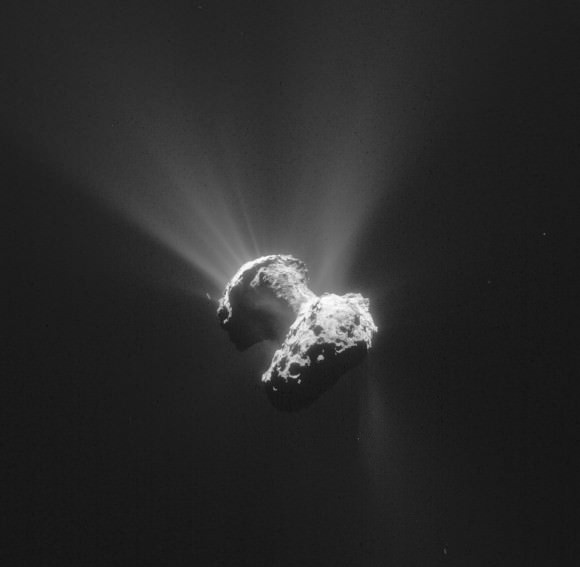
It appears then that Comet 67P’s surface is mostly covered in dark dust with small exposures of fresh ice resulting from changes in the landscape like crumbling cliffs and boulder-tossing from jet activity. As the comet approaches perihelion, some of that ice will become exposed to sunlight while new patches may appear. You, me and the Rosetta team can’t wait to see the changes.
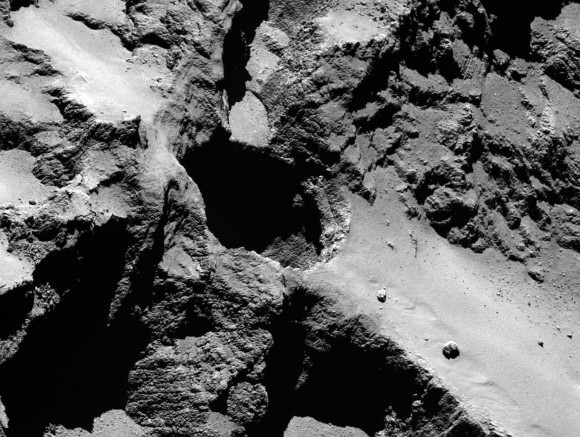
Ever wonder how a comet gets its jets? In another new study appearing in the science journal Nature, a team of researchers report that 18 active pits or sinkholes have been identified in the comet’s northern hemisphere. These roughly circular holes appear to be the source of the elegant jets like those seen in the photo above. The pits range in size from around 100 to 1,000 feet (30-100 meters) across with depths up to 690 feet (210 meters). For the first time ever, individual jets can be traced back to specific pits.
In specially processed photos, material can be seen streaming from inside pit walls like snow blasting from a snowmaking machine. Incredible!
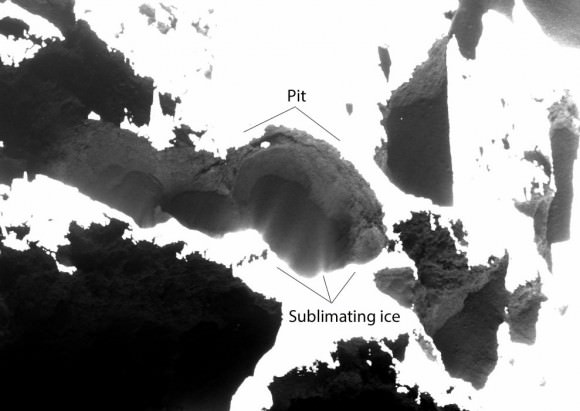
“We see jets arising from the fractured areas of the walls inside the pits. These fractures mean that volatiles trapped under the surface can be warmed more easily and subsequently escape into space,” said Jean-Baptiste Vincent from the Max Planck Institute for Solar System Research, lead author of the study.
Similar to the way sinkholes form on Earth, scientists believe pits form when the ceiling of a subsurface cavity becomes too thin to support its own weight. With nothing below to hold it place, it collapses, exposing fresh ice below which quickly vaporizes. Exiting the hole, it forms a collimated jet of dust and gas.
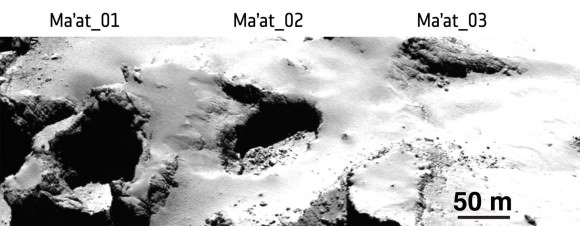
Credits: ESA/Rosetta/MPS for OSIRIS Team MPS/UPD/LAM/IAA/SSO/INTA/UPM/DASP/IDA
The paper’s authors suggest three ways for pits to form:
* The comet may contain voids that have been there since its formation. Collapse could be triggered by either vaporizing ice or seismic shaking when boulders ejected elsewhere on the comet land back on the surface.
* Direct sublimation of pockets of volatile (more easily vaporized) ices like carbon dioxide and carbon monoxide below the surface as sunlight warms the dark surface dust, transferring heat below.
* Energy liberated by water ice changing its physical state from amorphous to its normal crystalline form and stimulating the sublimation of the surrounding more volatile carbon dioxide and carbon monoxide ices.
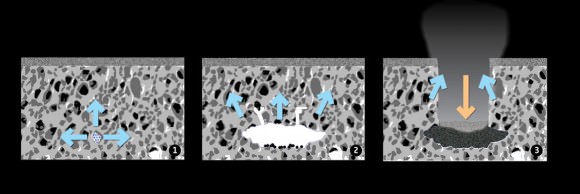
The researchers think they can use the appearance of the sinkholes to age-date different parts of the comet’s surface — the more pits there are in a region, the younger and less processed the surface there is. They point to 67P/C-G’s southern hemisphere which receives more energy from the Sun than the north and at least for now, shows no pit structures.
The most active pits have steep sides, while the least show softened contours and are filled with dust. It’s even possible that a partial collapse might be the cause of the occasional outbursts when a comet suddenly brightens and enlarges as seen from Earth. Rosetta observed just such an outburst this past April. And these holes can really kick out the dust! It’s estimated a typical full pit collapse releases a billion kilograms of material.
With Rosetta in great health and perihelion yet to come, great things lie ahead. Maybe we’ll witness a new sinkhole collapse, an icy avalanche or even levitating boulders!

